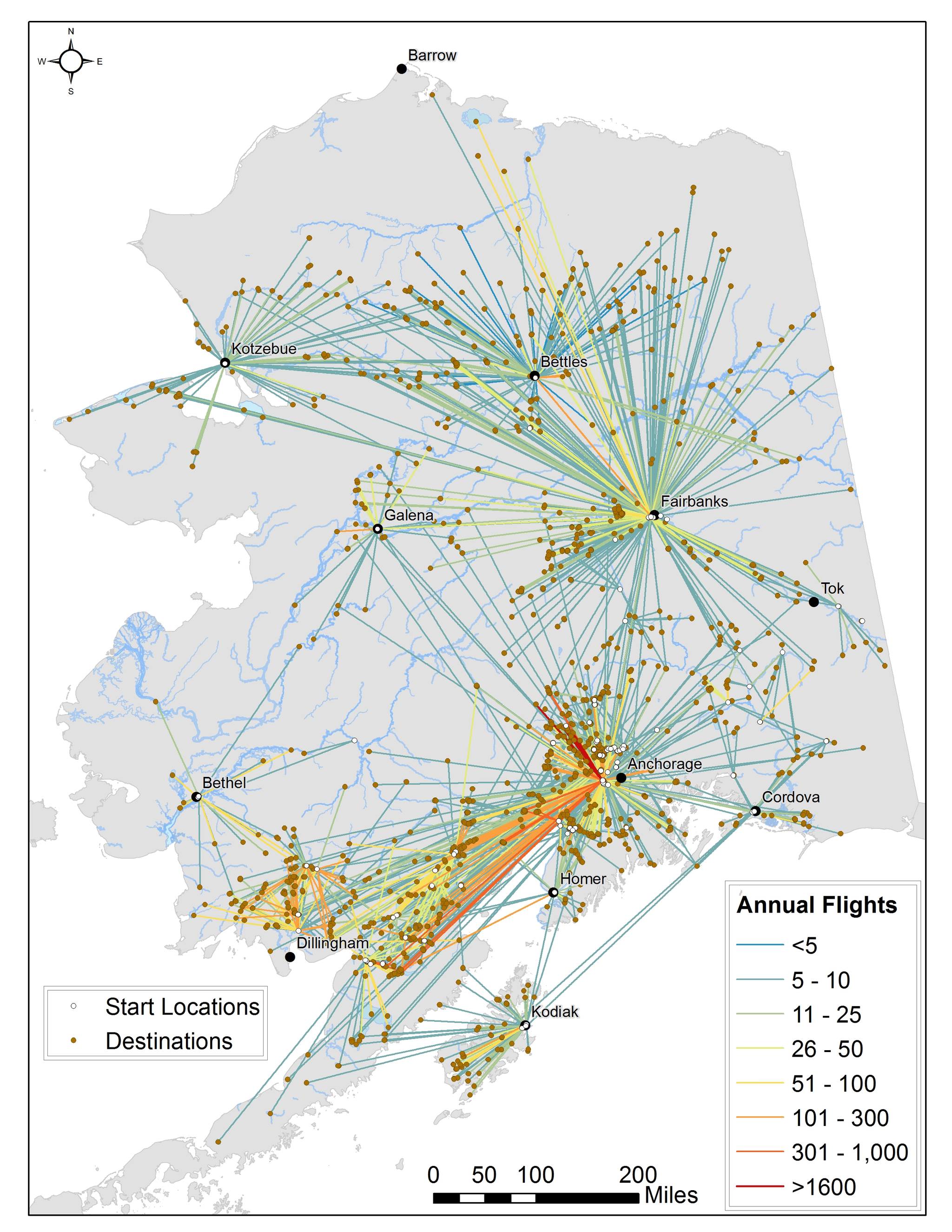Invasive plants and animals are gaining a foothold in Alaska. They are slowly but relentlessly changing our environment and economy — changes that most people are unlikely to notice, because they occur over long periods. In other parts of the world, invasive species have already damaged the environment, harmed human health, and caused significant economic losses. Alaska, by contrast, had relatively few biological invaders for most of the twentieth century. But things have changed. Alaska now has many biological invasions in their initial stages. The most threatening invader right now is elodea, a freshwater aquatic plant.
Elodea is commonly used for vegetation in aquariums, and it is likely that people emptying their aquariums into Alaska’s waterways started the invasion. It was first discovered in waters of several Alaska towns and cities, in residential areas and near elementary schools. Once introduced in ponds or slow-moving rivers, elodea spreads aggressively. In the Interior, it is being carried downstream from Chena Slough into the Tanana and Yukon River watersheds. Throughout the state, floatplanes are inadvertently spreading it to remote water bodies, when fragments of the plant get caught on floatplane rudder assemblies.
Today we are at a critical point: ridding Alaska of elodea is still possible. Government agencies have already removed elodea from 12 lakes — more than half the 20 known infested waterbodies — without risking other aquatic resources or native vegetation. But if we do not remove all the known infestations now — and set up a system to efficiently deal with any new elodea infestations—we’ll face long-term management costs and damage to our fisheries, tourism, and subsistence resources.
If elodea is allowed to further spread, it will likely reduce salmon spawning and rearing habitat and compromise the long-term health of Alaska’s salmon stocks. How much would insufficient action cost Alaskans? I recently estimated the full range of potential ecological and economic effects of elodea on Alaska’s commercial sockeye fisheries by combining fisheries market data with what experts believe elodea could do to sockeye salmon. A statewide survey with floatplane pilots showed where elodea is most likely to be spread. I also calculated the additional cost to floatplane pilots of losing access to their landing sites — because dense aquatic vegetation endangers floatplanes as they take off or land. I found that if elodea spreads throughout Alaska, between 200 and 300 floatplane lakes could potentially be infested with elodea by 2030. The economic loss to commercial sockeye fisheries and recreational floatplane pilots would most likely approach $97 million a year. That equals one quarter of the value fishermen received for their 2016 statewide salmon catch.
To prevent these losses, Alaska would need both to finish cleaning up the known infestations and also put in place an emergency response system to deal with new, previously unknown elodea infestations. Critical to an emergency response system are funding, coordination, and streamlined permitting. So far, the successful elodea clean-ups have largely been made possible through funds from the U.S. Fish and Wildlife Service. The formal establishment and funding of a rapid response fund — such funds exist in many other states — would set aside emergency funds for managing previously unknown elodea infestations and dealing with newly discovered invasive species that would be far more damaging than elodea. For example, another aquatic invasive plant — Eurasian watermilfoil — has not yet been found in Alaska but is ranked at the top of Alaska’s list of invasive plant threats.
Critical for statewide coordination and permitting efforts are a small number of dedicated employees in the state Division of Agriculture and the departments of Fish and Game and Environmental Conservation. This coordination has shortened the permitting window to a minimum of 100 days. Yet, further streamlining would allow treatment to occur when environmental conditions are ideal for achieving highest clean-up success. Also, due to elodea’s explosive growth, any delay in clean-up can lead to further spread and higher clean-up costs.
I estimate that a one-time investment of approximately $10 million would pay for cleaning up all currently known elodea infestations in the state, excluding the cost of monitoring and the cost of cleanup related to as yet unknown elodea infestations. In light of the economic and cultural importance of salmon in Alaska, and compared with estimated future costs, these investments likely yield a very high return, even in a time of declining budgets.
Tobias “Toby” Schwoerer is a senior research economist at UAA’s Institute of Social and Economic Research. He recently received a Ph.D. in bioeconomics for his research on the potential economic consequences to commercial salmon fisheries and floatplane pilots from elodea. His dissertation will be available through the University of Alaska Fairbanks library later this spring. The research was primarily funded by the Alaska Sustainable Salmon Fund and Alaska SeaGrant and was conducted in collaboration with state and federal agencies. The opinions expressed here are his, not those of ISER or UAA.

